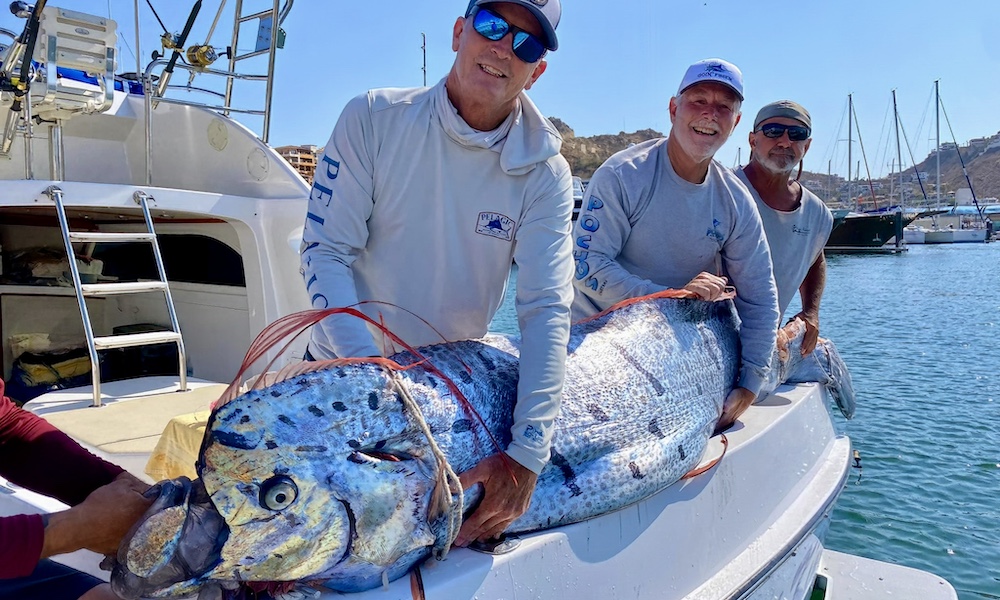Part of the allure of deep-sea fishing is that you never know what you might encounter at sea.
But one can be reasonably certain that nobody would expect to encounter a 10-foot oarfish under attack by sharks.
The oarfish in question, a serpent-like denizen with crimson fins, was spotted floundering near the surface on May 28 off Cabo San Lucas, Mexico.
Local angler Tony Frasconi and friends, Ken and Gary, were fishing offshore when they saw the oarfish with its tail-fin missing while being circled by sharks.
Pisces Sportfishing Fleet interviewed the anglers after they returned to port.
“Incredible catch today in Cabo!” Pisces exclaimed via Facebook. “This beautiful 141-pound, extremely rare oarfish, was snatched from sharks by anglers in the vicinity fishing for marlin.”
Realizing that the oarfish was dying, the fishermen gaffed and hauled it aboard their vessel. The “elusive and strange” creature was donated to biologists in the Baja California Sur capital of La Paz.
In a separate Facebook post, Pisces added: “This deep-water species is seldom seen and rarely this big. This fish is also known as the ‘Earthquake Fish’ as folk knowledge says they only appear when an earthquake is about to take place.”
Because of their size and bizarre appearance, oarfish are believed to have spawned tales of sea monsters among ancient mariners.
According to National Geographic, they reside mostly at depths of 3,000-plus feet and can measure 50-plus feet.
“Although oarfish were likely the source of many historic tales of sea serpents and sea monsters, they are hardly dangerous to people,” National Geographic assures on its website. “Oarfish feed on tiny plankton and have a small opening to their digestive system.”
Although oarfish sightings are rare, several have occurred off Baja California Sur over the years, generally involving dead or dying oarfish.
Scientists believe that oarfish can be forced to the surface by storms or powerful currents.
In Japan, some people believe that an oarfish sighting could mean that an earthquake is imminent.
The Los Cabos region has not recorded any significant shakers since the oarfish was brought to port.


